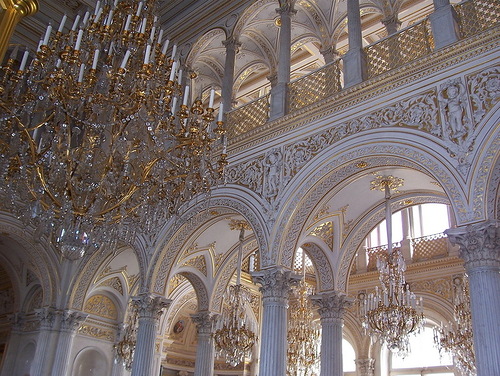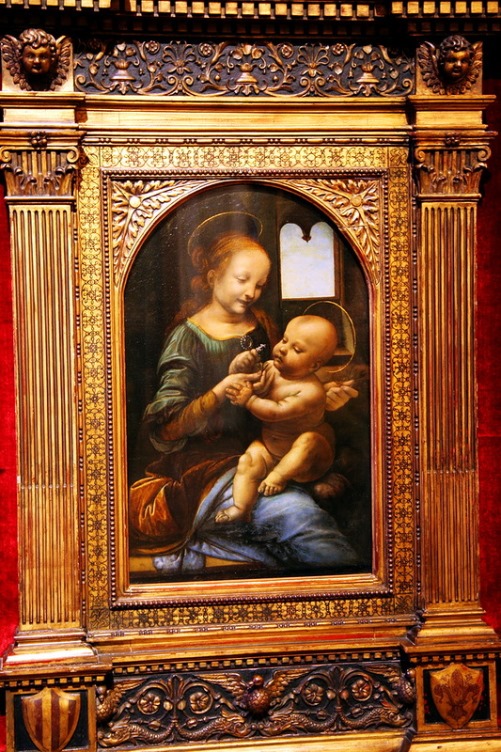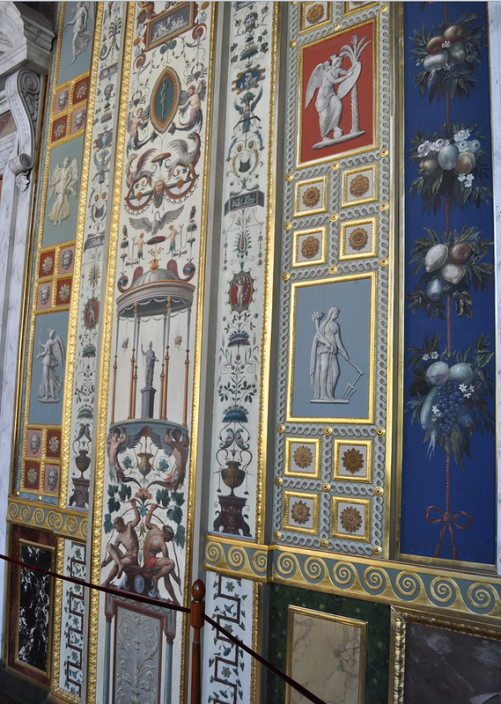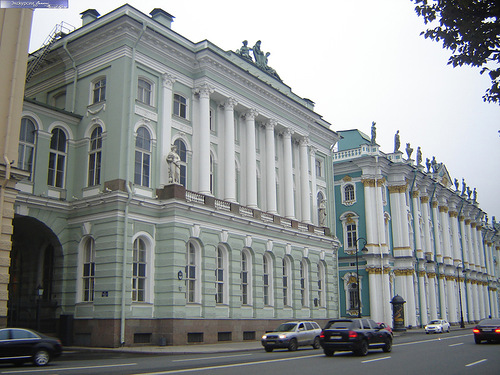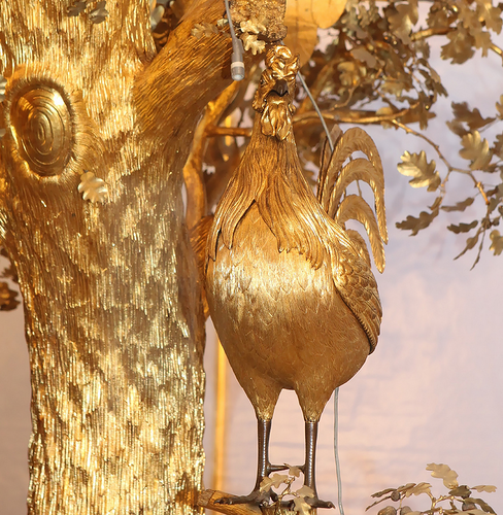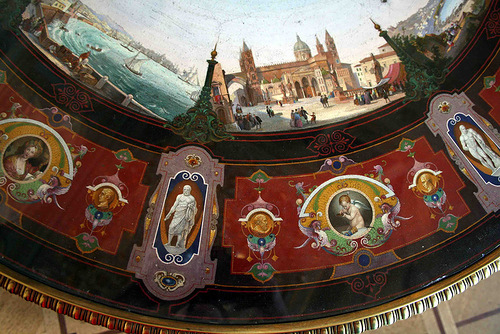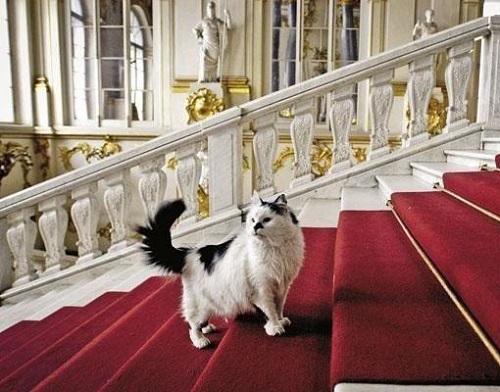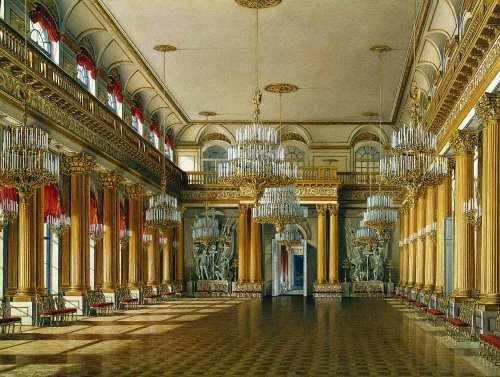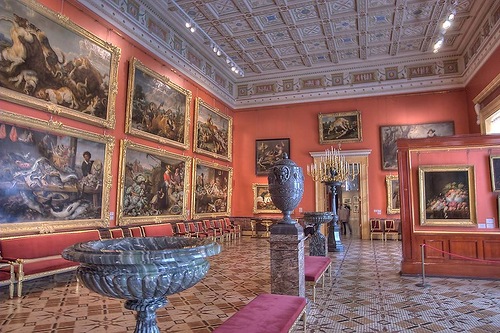Walking through the halls of the Hermitage. Part 4
Walking through the halls of the Hermitage. Part 4.
The museum collection was started in 1764, when a German merchant Johann Ernst Gotzkowsky gave to Russia his collection of 225 pictures in debt. They were placed in the Small Hermitage. Catherine II gave an order to buy up all the valuable works of art to be auctioned abroad. Gradually the area of the Small Hermitage was not enough. And works of art were placed in a new constructed building called the Old Hermitage. In the late 19th century the Museum was so popular in Russia and Europe that Russian patrons of art considered it an honor to offer their treasures to it as a gift. Thus in 1911-12 the Stroganov family bequeathed to the Museum some works by Italian masters, including a reliquary by Fra Angelico and a wing of a diptych Madonna of the Annunciation by Simone Martini, as well as masterpieces of silver.

Doyble-headed eagle, detail of refined iron grating. Walking through the halls of the Hermitage. Part 4
Soviet ladder
In 1828, the first floor of the Great Hermitage was occupied by the State Council and the Committee of Ministers, for which in the western part of the building was constructed a new entrance and a new Soviet ladder (architect Andrei Stackenschneider).
The interior is designed was made in bright colors: the walls decorated with panels and pilasters of white and pink artificial marble, while the upper landing is decorated with white marble columns. The ceiling painting of The Virtues Presenting Russian Youth to Minerva adorned the Oval Room that previously existed in this location. The only strong accent in the interior is a malachite vase (Yekaterinburg, 1850s).
Hall of Titian. The rooms decorated by Andrei Stackenschneider in the 1850s. These apartments were intended for important guests of the Imperial Court. Finished in XIX century, the interior was preserved only partially. During the restoration, carried out in 2003, the walls were painted in the color of damask, asit was in origin, according to the archives. The hall features paintings by late works of Titian (Tiziano Vecellio, 1488-1576) – the great Venetian Renaissance artist. Among them – “Danae”, “Penitent Magdalene”, “Saint Sebastian”.
Hall of Italian art of XIII – early XV century. Reception, as well as all the old front suite rooms (large) Hermitage, were framed by A. Shtakenshneider in 1851-1860. Hall is a fine example of interior of historicism era. Green jasper columns and pilasters decorated with paintings, gilded ornaments of ceiling, doors decorated with medallions of china, give the room a special elegance. In the hall of the works of Italian artists XIII – early XV, include “cross with the image of the Crucifixion” by Ugolino di Tedice, the Madonna, a panel of a diptych of the Annunciation, by Simone Martini.
Hall of Italian art in the XVI.
The court room was part of the Old (Greater) Hermitage, executed in the middle of XIX century by architect Andrei Stackenschneider. Interior decoration has survived. Now here are the works by Venetian painters of the XVI, such as Jacopo Palma the Elder, Lorenzo Lotto, Giovanni Battista Cima de Conegliano. The masterpieces of the museum’s collection – a picture of Giorgione (about 1478-1510) “Judith” – one of the few original works of the founder of the Venetian school.
Hall of Leonardo da Vinci. Two tiers of windows in the hall of the Old (Great) Hermitage present masterpieces of the museum – two works by the greatest master of the Renaissance, Leonardo da Vinci – “Benois Madonna”, and the “Madonna Litta”. The interior of the hall (architect A.I. Shtakenshneider, 1858) combines a light colored stucco with stone – porphyry and jasper columns, three white marble fireplaces incrusted with lapis-lazuli and jasper and gold. The room features painted panels and ceiling. The doors are decorated in the style of “Bull” – tortoiseshell plates and gilt brass.
The Pavilion Hall. The Pavilion Hall of the Small Hermitage was created in the mid XIX century by A.I. Shtakenshneider. The architect used architectural motifs of antiquity, the Renaissance and the east. The combination of light marble with gilt stucco ornaments and the brightly shining twenty-eight crystal chandeliers make it particularly impressive. The hall is adorned with an arcade of columns supporting a graceful gallery. On display in the southern part of the hall is a copy of the floor mosaics, unearthed in 1780 in the ancient Roman bath at Ocriculum. The niche, leading to the staircase gallery and adorned with colored marble columns, is surrounded with four marble fountains imitating with variations the Fountain of Tears in the Bakhchisarai Palace. Among the museum’s exhibits which never fail to attract visitors’ attention, is the Peacock Clock (James Cox, 18th century) from the collection of Catherine the Great. The Pavilion Room also contains the collection of mosaic tables made by Italian and Russian craftsmen in the mid-19th century.
Walking through the halls of the Hermitage

The most famous painting of the Hermitage. Leonardo da Vinci. Madonna and Child (The Litta Madonna) (1490 – 1491)
www.hermitagemuseum.org
liveinternet.ru/users/matrioshka





